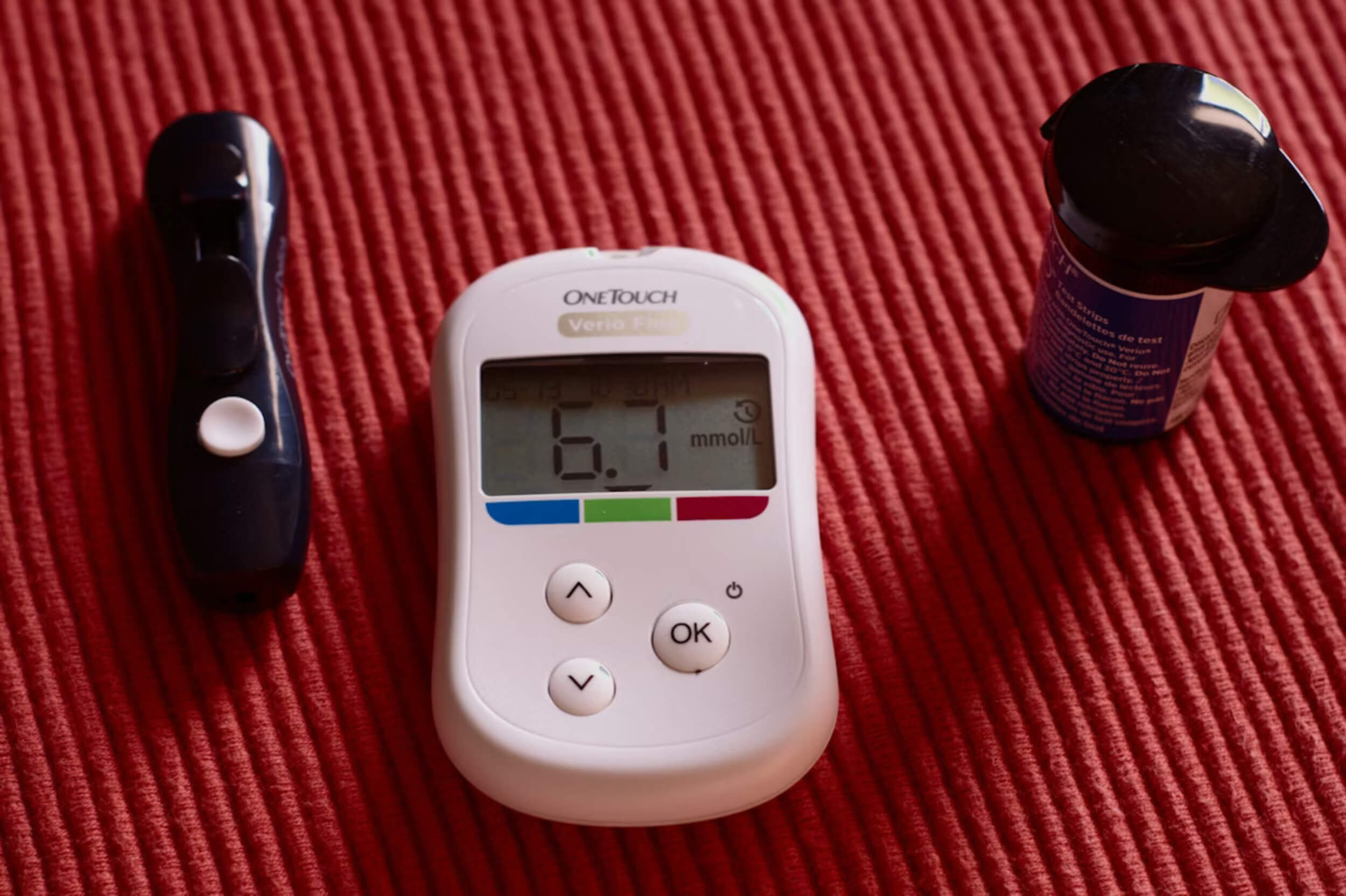Feeling drained after lunch or wide awake at midnight? That’s often a sign your blood sugar is out of sync. It doesn’t just affect people with diabetes — blood sugar impacts energy, mood, cravings, and how steady you feel throughout the day.
Some people think you need a strict diet to fix it, but the truth is, small daily choices go a long way. When blood sugar rises and falls too fast, it puts stress on your body and can lead to weight gain, sleep problems, or long-term health issues.
That’s where the Blood Sugar Balancing Plan comes in. It’s not about counting every bite or cutting out everything you love. It’s about smart, doable changes that make you feel better — fast. If you’re tired of feeling all over the place, this plan gives you a way to feel steady again.
What Blood Sugar Balance Actually Means
Knowing what blood sugar balance really means can help you spot small issues early — before they turn into bigger health problems.
It’s Not Just About Diabetes
Low energy in the afternoon, cravings that don’t quit, or feeling foggy for no clear reason — these may all be signs your blood sugar isn’t stable. Even if you don’t have diabetes, your body still reacts to quick spikes and crashes in blood sugar. The goal isn’t just avoiding extremes — it’s staying steady so you feel your best.
Steady blood sugar helps you:
• Stay sharp and focused throughout the day
• Avoid energy crashes or mood dips
• Reduce constant cravings for sweets or carbs
Insulin’s Role in the Background
Behind the scenes, insulin works to move sugar from your blood into your cells. But over time, when your body stops responding well to insulin — a process called resistance — things can start going off track. You may not feel it at first, but it can build quietly.
Factors that affect how insulin works:
• What you eat (especially carb quality and balance)
• How much you move during the day
• Whether you’re getting restful sleep regularly
The Blood Sugar Balancing Plan helps you understand how these pieces connect — and how to reset them with small, daily choices.
Start With What’s on Your Plate
What you put on your plate is one of the fastest ways to support steady blood sugar — and the good news is, it doesn’t mean giving up your favorite foods.
Choose Slow-Burning Carbs
Meals that spike your blood sugar usually come from one thing — fast-digesting carbs. These show up in sugary drinks, white bread, pastries, and snacks that leave you hungry again an hour later.
Instead, focus on carbs that break down slowly:
• Oats
• Lentils
• Beans
• Sweet potatoes
These are packed with fiber and give you energy that lasts, which is key to any effective Blood Sugar Balancing Plan.
Don’t Skip the Protein and Healthy Fats
Your body handles carbs better when you pair them with protein or fat. They slow digestion, which keeps your blood sugar from jumping too fast.
Try building meals with these combos:
• Eggs + whole grain toast + avocado
• Salmon + brown rice + roasted veggies
• Hummus + sliced peppers + olives
These combos don’t just taste better — they help your blood sugar stay in check for hours.
Make Friends With Fiber
Fiber does more than keep you regular. Soluble fiber, in particular, slows down how fast sugar gets into your bloodstream and supports gut health, which plays a role in glucose control too.
Try adding:
• Chia seeds to your oatmeal
• Berries to your yogurt
• Broccoli to your dinner plate
• A scoop of oats to your smoothie
The Blood Sugar Balancing Plan encourages you to focus on food quality — not just calories or carbs.
The Timing Trick — Why When You Eat Matters
When you eat matters just as much as what you eat — the right timing can help prevent blood sugar crashes and keep your energy steady all day.
Don’t Skip Meals (It Backfires)
Skipping meals might sound like a shortcut, but it usually causes more harm than good. Your blood sugar can drop too low, then spike when you finally eat — leaving you feeling tired, shaky, or overly hungry.
What works better:
• Eat every 4–5 hours during the day
• Don’t go to bed super full or completely empty
• Keep snacks handy if your meals are far apart
This kind of routine supports your body’s natural rhythm — a core part of the Blood Sugar Balancing Plan.
Balanced Breakfast = Better All Day
The first meal sets the tone. A breakfast high in protein helps prevent mid-morning energy dips and lowers the chance of overeating later in the day.
Here are some smart starts:
• Greek yogurt with chia and berries
• Scrambled eggs with avocado and toast
• Cottage cheese with fruit and nuts
Eating early doesn’t mean eating a lot — just eating smart.
Rethink What’s in Your Glass
What you drink can quietly raise or steady your blood sugar — and small swaps here can make a bigger difference than most people realize.
Hydration Helps Sugar Regulation
Your kidneys help filter out extra sugar, but they need water to do the job. Even mild dehydration can raise your blood sugar more than you’d think.
A few ways to stay on track:
• Carry a water bottle and refill it twice
• Drink a glass before every meal
• Swap sugary drinks for flavored water with lemon or cucumber
Water is a quiet hero in the Blood Sugar Balancing Plan — and often the most overlooked.
Why Sugary Drinks Are a Hidden Trigger
Liquid sugar hits fast and hard. Your body doesn’t process it the same way as solid food, which leads to quick rises in blood sugar.
Common culprits include:
• Regular soda
• Fruit juice (even 100% juice)
• Sweetened smoothies
• Sports and energy drinks
Stick with options that hydrate without the spike — water, herbal teas, or sparkling water without added sugar.
Move a Little, Move Often
You don’t need a long workout to make a difference — even short bursts of movement can help your body manage blood sugar more smoothly.
The Power of Post-Meal Movement
Big meals, especially carb-heavy ones, tend to raise blood sugar. But something as simple as a walk afterward can help your body use that sugar for energy — instead of letting it hang around in your bloodstream.
Try these low-effort habits:
• Walk for 10–15 minutes after lunch or dinner
• Pace while you’re on the phone
• Tidy up or do light chores right after eating
This is one of the easiest wins in the Blood Sugar Balancing Plan.
Exercise Snacks Add Up
You don’t need a full gym session. Little bursts of movement during your day can keep your blood sugar more steady — especially if you sit a lot.
Examples of “exercise snacks”:
• 10 squats every hour
• Calf raises while brushing your teeth
• Resistance band pulls between tasks
• Quick stair climbs during breaks
It’s not about burning calories — it’s about staying active in short, smart ways.
Sleep — The Secret Stabilizer
How well you sleep affects how well your body handles blood sugar — and one bad night can throw things off more than most people think.
Poor Sleep = Poor Glucose Control
Missing sleep affects more than just your mood. It can raise cortisol, the stress hormone, and make your body more resistant to insulin the next day.
Lack of sleep can also:
• Make you crave sugar-heavy foods
• Slow your metabolism
• Mess with your appetite signals
Sleep might not be the first thing you think of when talking about the Blood Sugar Balancing Plan, but it’s one of the most powerful tools.
Sleep Hygiene Basics
Getting quality rest doesn’t have to be complicated. A few simple habits can improve your sleep fast.
Here’s what helps:
• Go to bed and wake up around the same time
• Turn off screens 30–60 minutes before bed
• Keep your room cool and dark
• Avoid caffeine late in the day
Better sleep, better balance — it’s that simple.
The Stress-Sugar Link
Stress doesn’t just mess with your mood — it can quietly raise your blood sugar and make healthy habits harder to stick to.
Cortisol’s Not Helping
Stress doesn’t just mess with your head — it messes with your blood sugar too. When cortisol rises, your body raises blood sugar as a backup fuel source, even if you haven’t eaten.
Signs stress might be affecting your levels:
• Cravings for sweet or salty snacks
• Trouble falling asleep
• Feeling “wired and tired” at the same time
The Blood Sugar Balancing Plan reminds you that what’s on your mind shows up in your body, too.
Easy Ways to Bring Stress Down
You don’t need a full yoga class to manage stress. Just a few quiet minutes can reset your nervous system.
Quick options to try:
• Breathe in for 4, hold for 4, out for 4
• Step outside and get sunlight on your skin
• Jot down what’s bothering you
• Take a 10-minute phone-free walk
Even small stress breaks protect your balance long term.
Stop Guessing — Track What Works
Paying attention to how your body responds is one of the smartest ways to take control — tracking helps you see what’s working and what’s not.
Use a Glucose Tracker or Log
You can’t change what you don’t see. Tracking your blood sugar — even for just a few days — can show you what meals help or hurt.
What to use:
• A basic notebook
• A notes app
• A home glucose monitor (ask your doctor first)
The Blood Sugar Balancing Plan encourages personal feedback — not guesswork.
What to Watch For
You don’t need perfect numbers — you need patterns. Are you always crashing mid-morning? Is dinner too heavy?
What to look out for:
• Big dips after certain meals
• Tiredness or brain fog
• Hunger too soon after eating
These clues can help you fine-tune your meals without making big changes.
Final Thoughts: Big Wins Come from Small Swaps
You don’t need to overhaul your entire life to feel better — just start with a few steady habits. The Blood Sugar Balancing Plan works best when it’s simple: more fiber, regular meals, better sleep, and a little movement each day. These small changes might not seem like much at first, but over time, they help your body stay balanced and your energy stay strong. Instead of chasing perfection, focus on what you can do consistently. That’s where the real results begin — and where lasting health is built.















